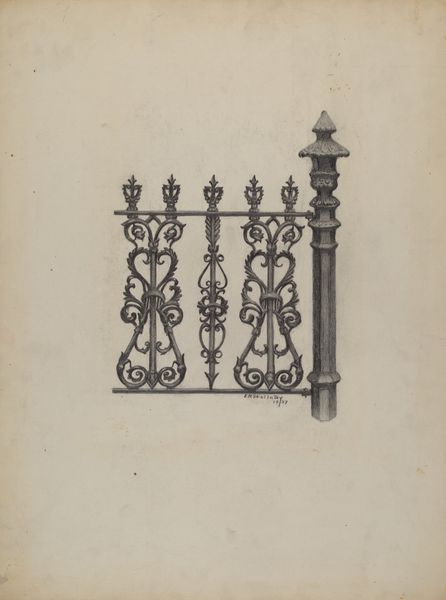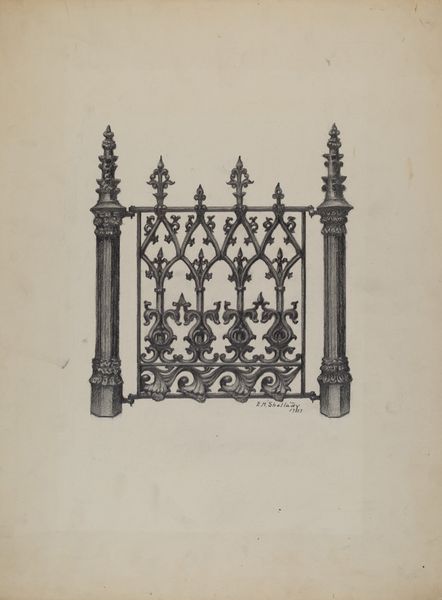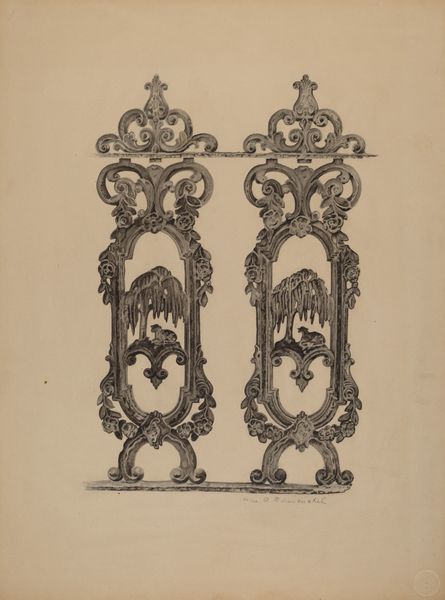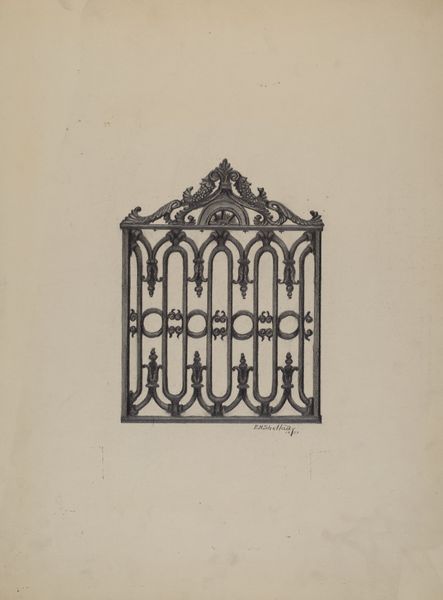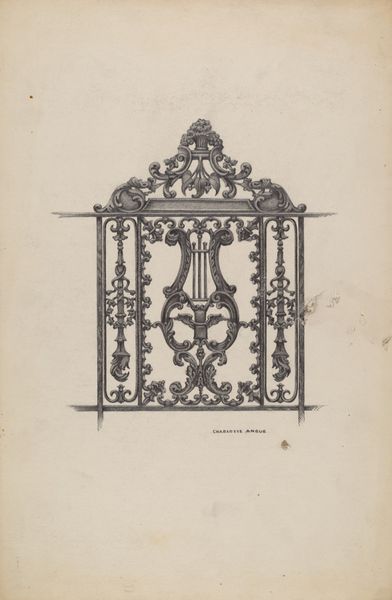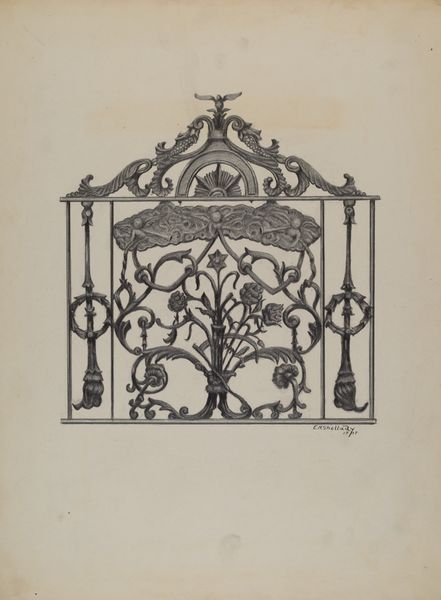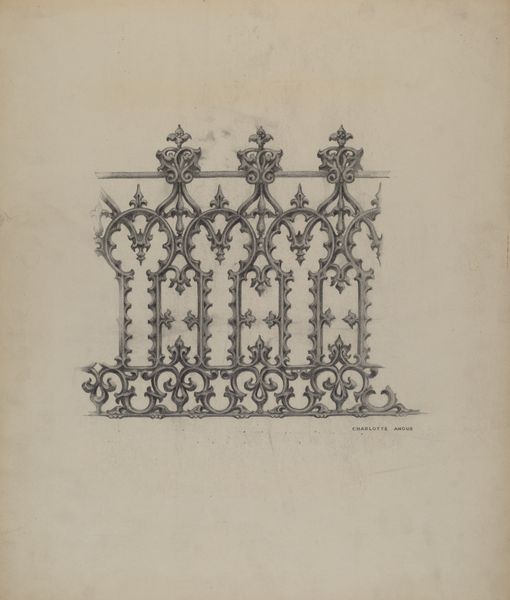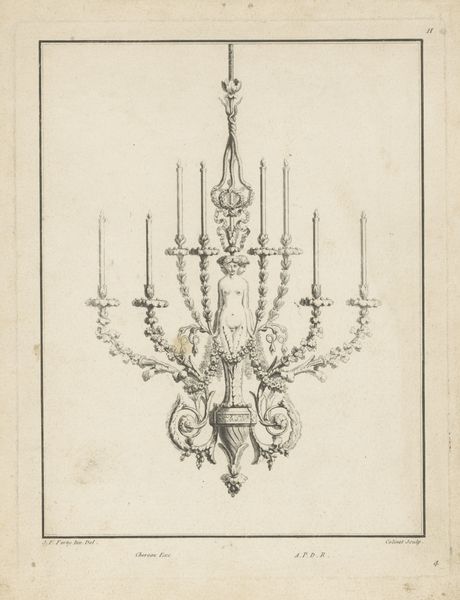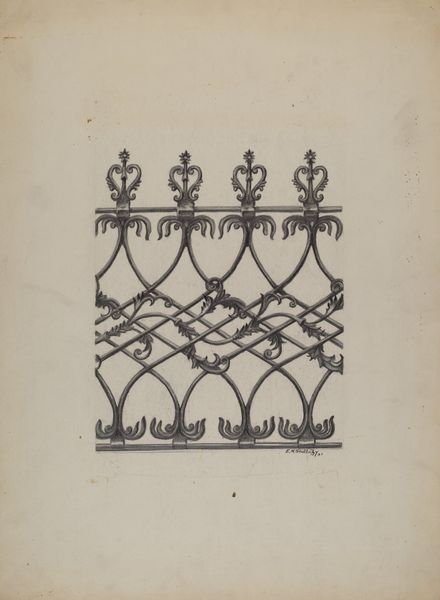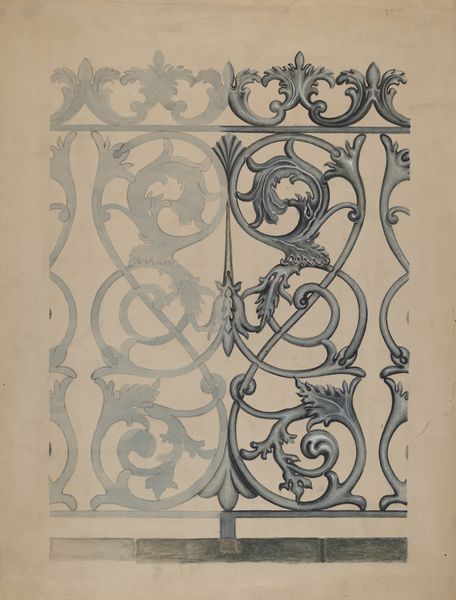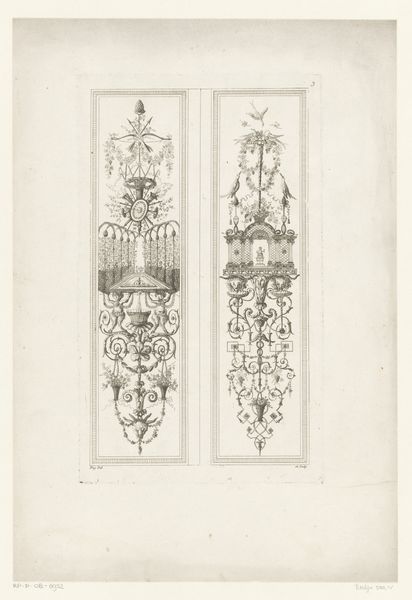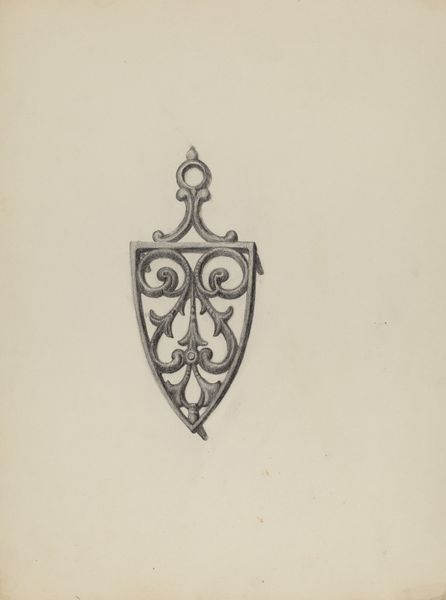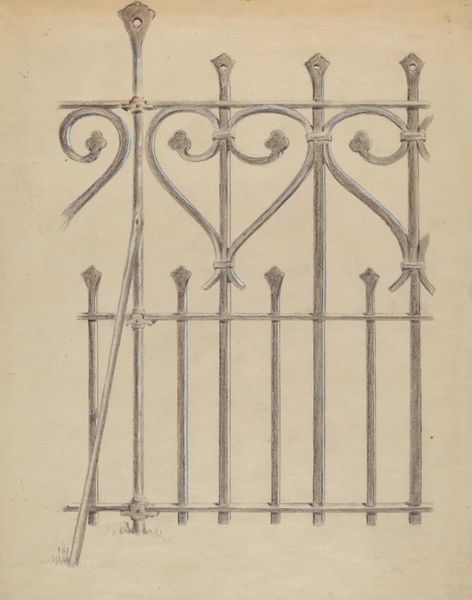
drawing, ornament, metal
#
drawing
#
ornament
#
metal
#
geometric
#
line
#
decorative-art
Dimensions: overall: 43.4 x 35.5 cm (17 1/16 x 14 in.)
Copyright: National Gallery of Art: CC0 1.0
Editor: So, this drawing is titled "Iron Ornament," made by Eugene Shellady sometime between 1935 and 1942. It looks like a design for decorative metalwork. I’m struck by how the precision of the lines creates this ornate yet functional feeling. What catches your eye? Curator: It's fascinating to consider this drawing as a document of labor and production. Who was Shellady, and what was their role in the creation of ironwork? Was he a craftsman, a designer, or both? The drawing itself becomes a material record of a process, mediated by skill, but aimed toward something functional. Think about the social context, too. What sort of building would feature this ornament? A public building? A private home? That tells us about the intended audience and its relation to both craft and industrial output. Editor: That's interesting – I hadn't thought about the context of labor. The description only mentions "drawing" as the medium, but I see a direct link to iron work and labor intensive fabrication work. How does knowing its potential end use change our perspective on its aesthetic qualities? Curator: The term "ornament" implies a certain status of decoration – an add-on rather than something structurally integral. But the history of metalwork is deeply tied to both utility and display of power, from gates to tools to weapons. Considering the Great Depression and wartime production in the years it was produced, were such embellishments necessary or a luxury? Also, consider what is lost in translation. The flat plan on paper elides what the material actually *does*. Does its function imply safety, beauty, boundary, something else entirely? Editor: So, by understanding the potential socio-economic context of the metalwork and drawing as a sign of production, we can question whether "ornament" is too limited a description for it? Curator: Precisely! It challenges a high-art versus craft categorization and opens us to thinking about value, utility, and the broader conditions of artistic production.
Comments
No comments
Be the first to comment and join the conversation on the ultimate creative platform.
